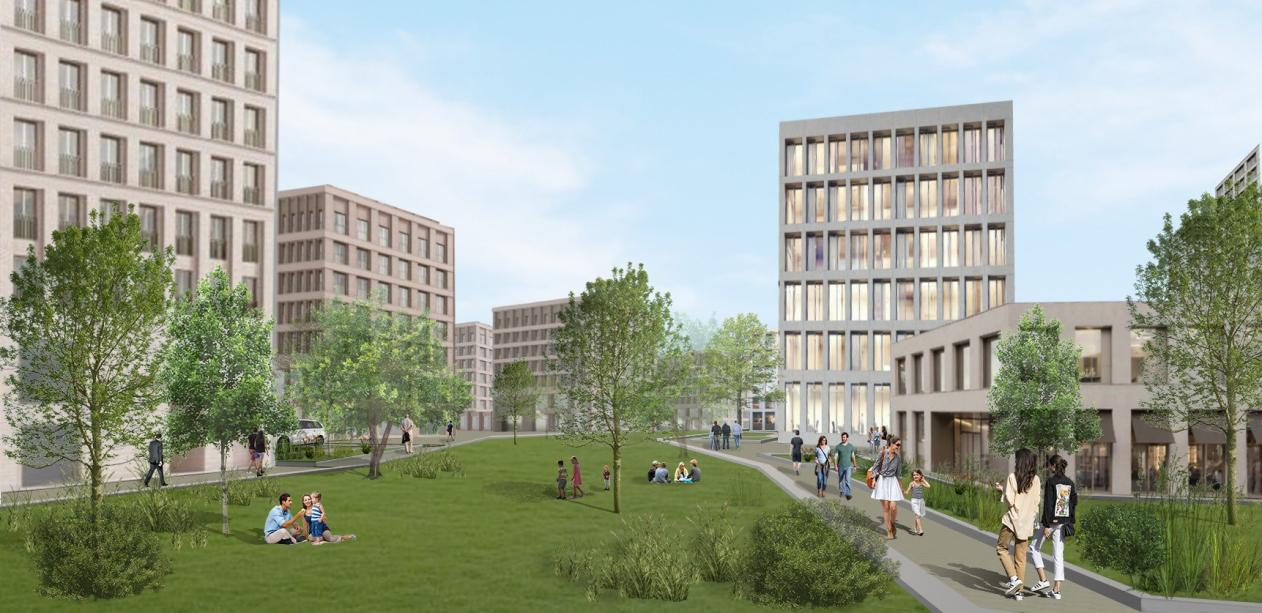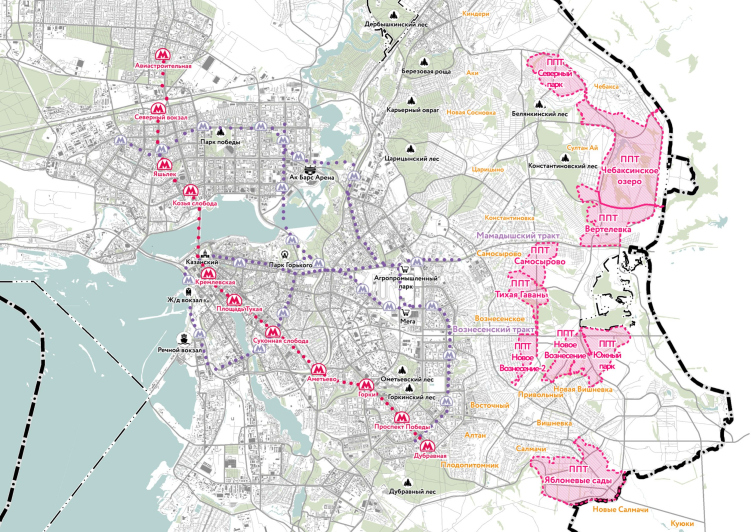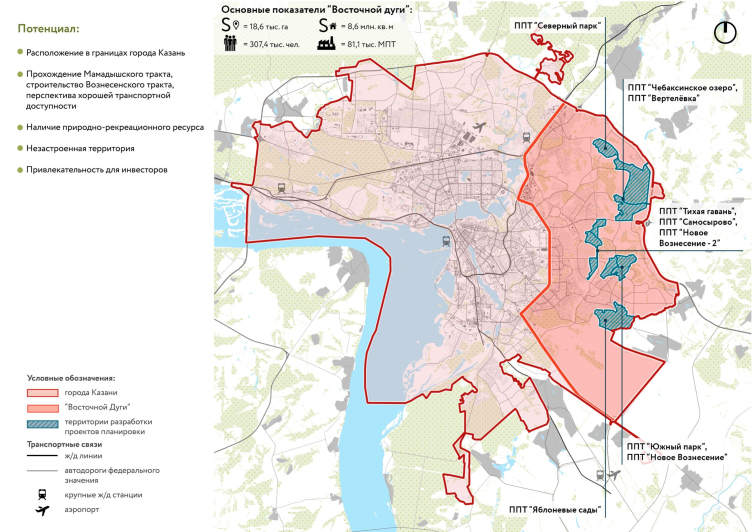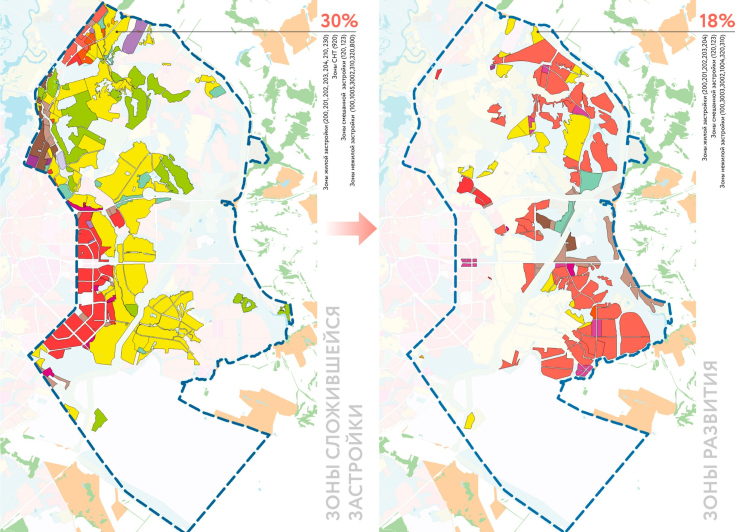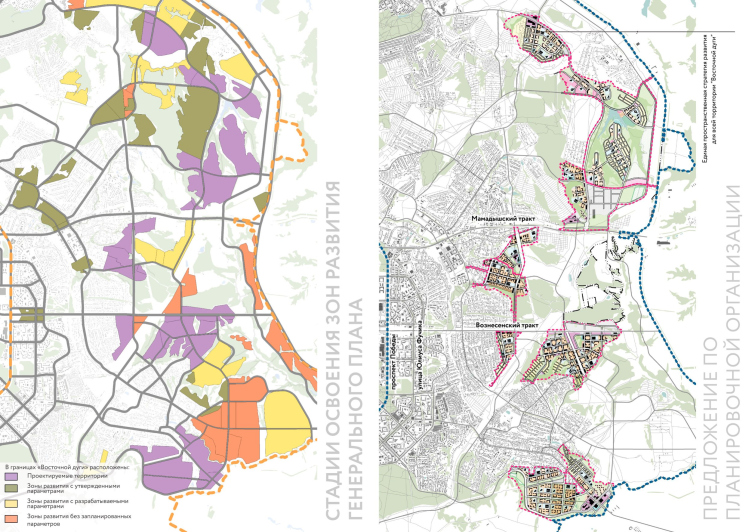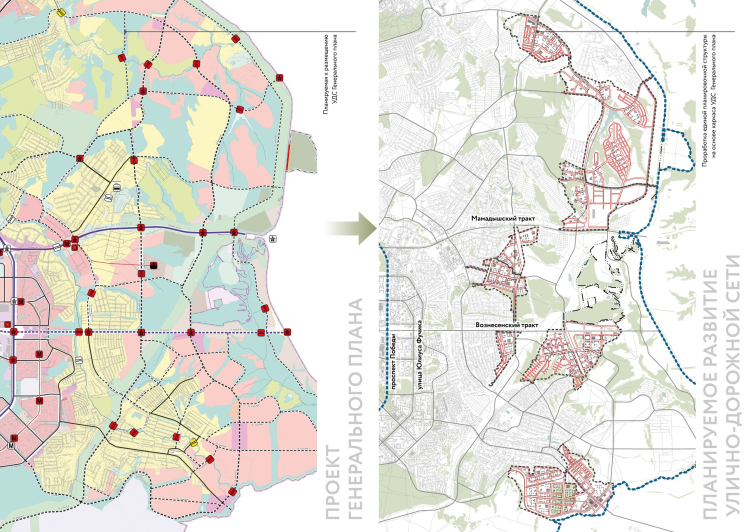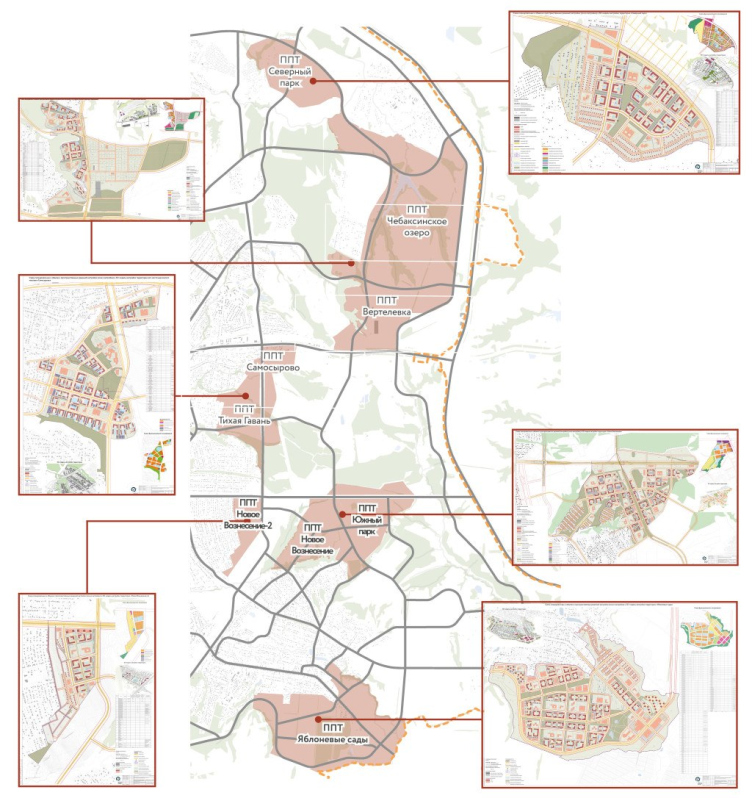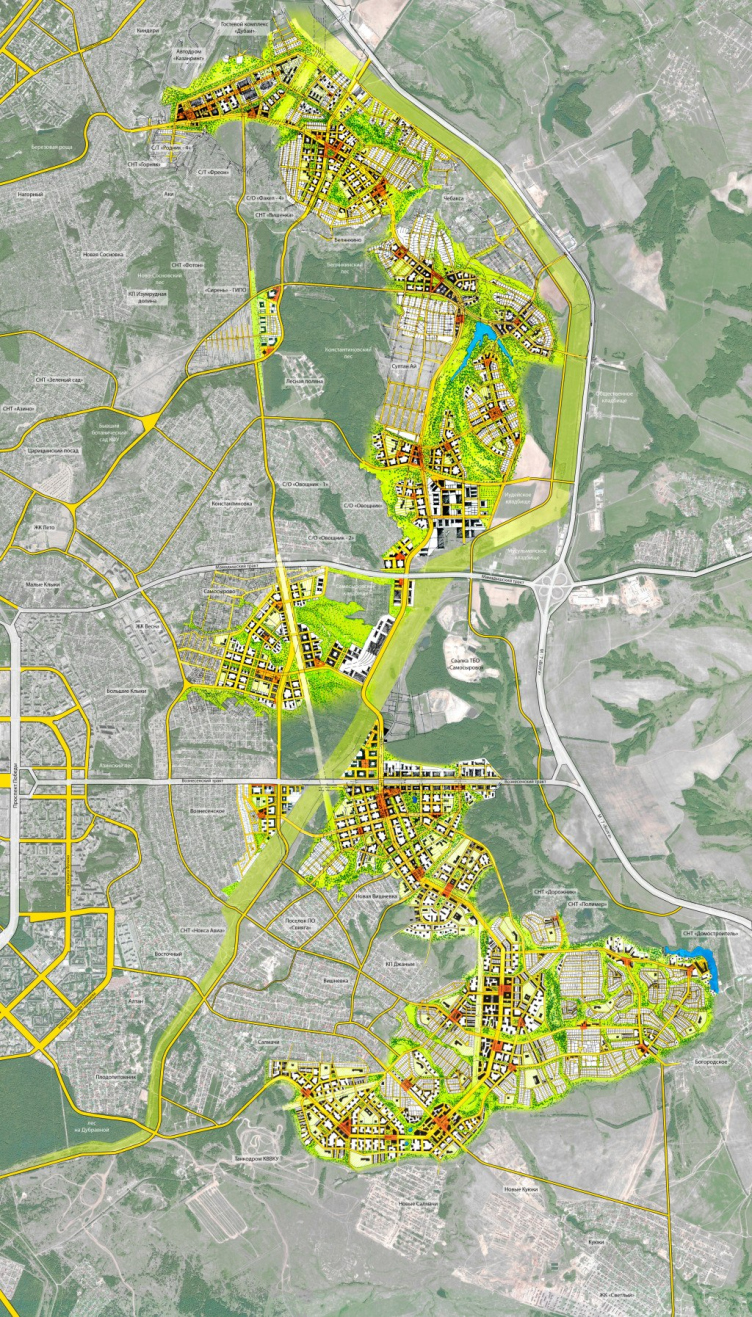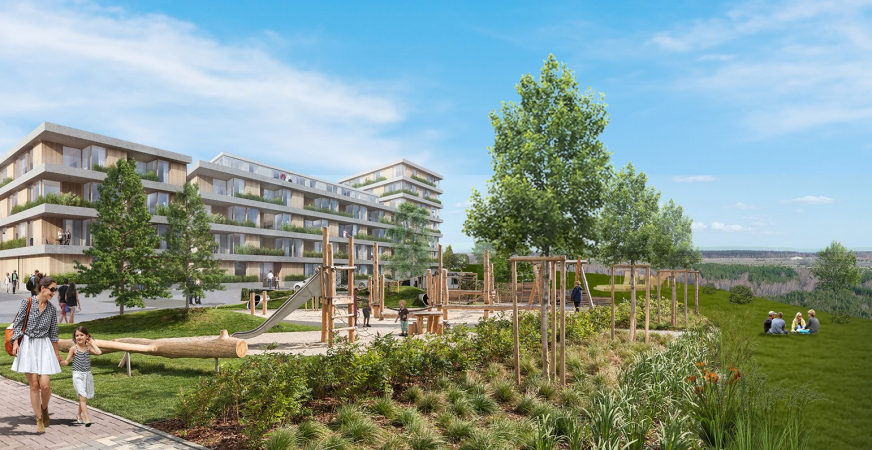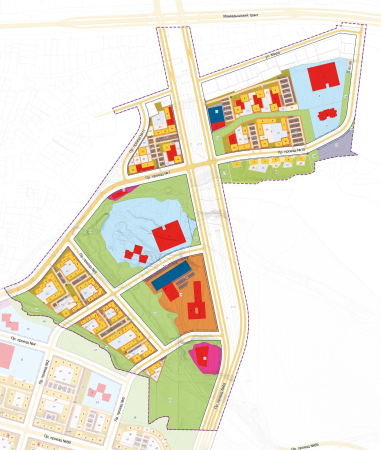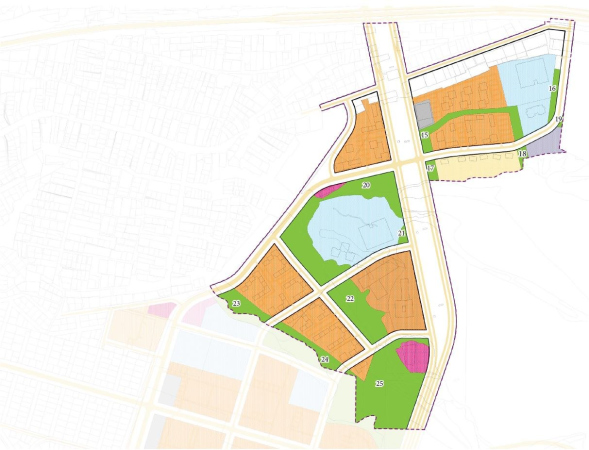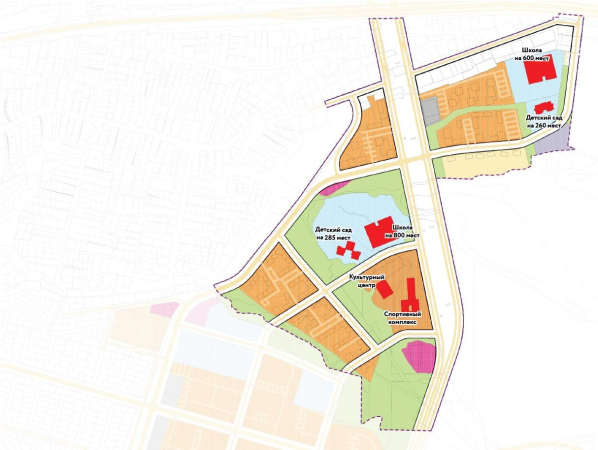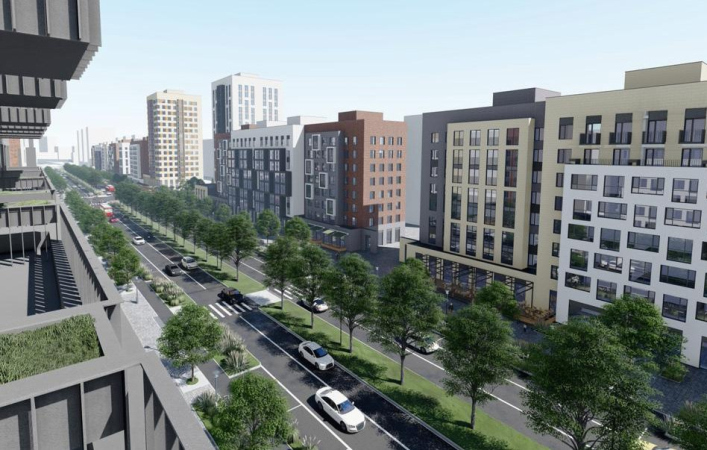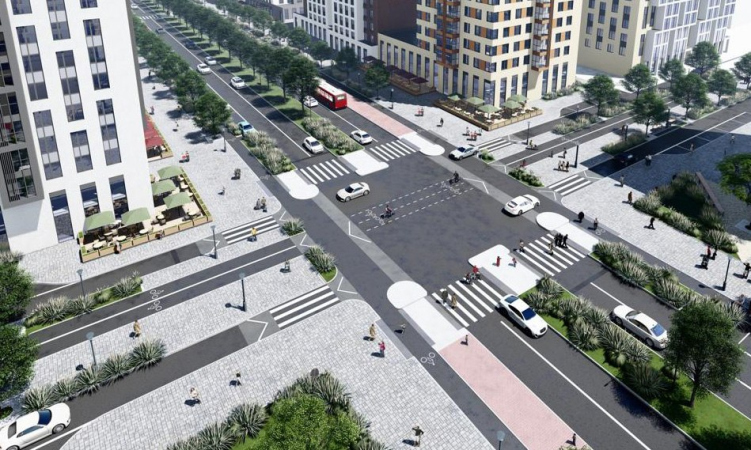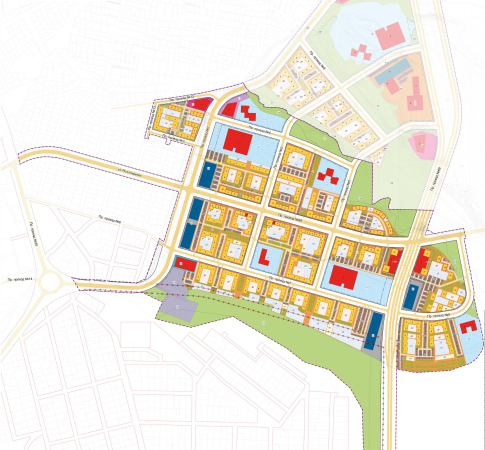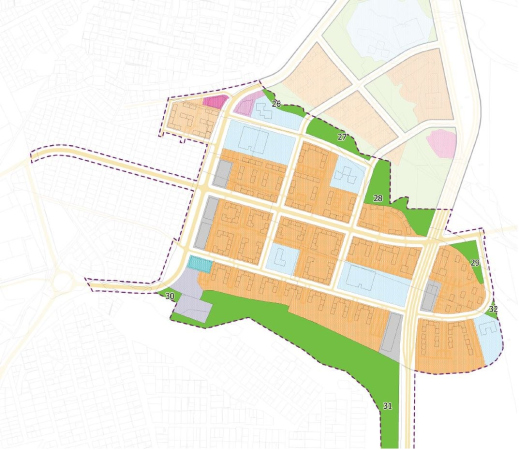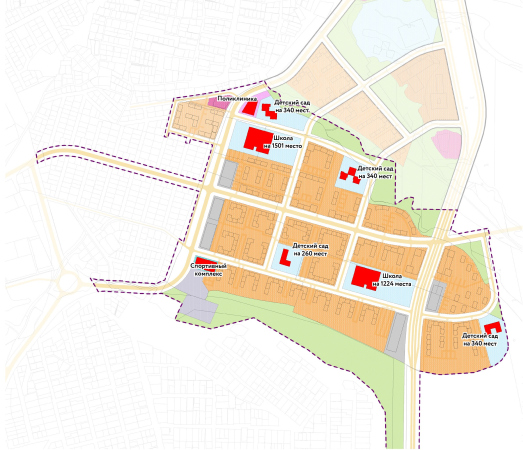On the east side, there are also undeveloped hectares of former agricultural land, the so-called “eastern arc”. It became part of the city after the approval of the 2007 master plan, after which Kazan in this part acquired the structure of a “puff pie”: dense historical buildings gradually merge with Soviet city blocks, which are then replaced by a belt of modern quarters, followed by a “lush” layer of townhouses and, finally, there is the “eastern arc”, which is destined to become the “crust” of the latest architecture.
The location plan
Copyright: © Genplan Institute of Moscow, ASG Invest
Today, the “arc” consists predominantly of undeveloped expanses of land with ravines, forests, brooks, and odd industrial facilities. The master plan does not stipulate any specific parameters or volumes of construction for this territory. At the same time, the 10,000 hectares of the “eastern arc” ended up staying in the hands of a single owner, the ASG Invest Group. This creates a chance of avoiding the fate of the western part of the city and creating instead a living environment worthy of Tatarstan’s capital, which in recent years does not cease to surprise us with breathtaking architectural projects and events.
The potential of the “Eastern Arc”
Copyright: © Genplan Institute of Moscow, ASG Invest
The Genplan Institute of Moscow was not the first to work with the “eastern arc”. However, its resources and expertise allowed the architects to make the most of their predecessors’ ideas and form an integrated proposal based on the principles of modern urbanism and substantiated by analytical calculations.
Maxim Vikulin, the head of architectural and planning office
The concept of integrated development of the “Eastern Arc” is one of the largest regional projects of the Institute in terms of both the scale of the territory and the detail of design solutions. This project is part of a continuous cycle of systematic and consistent work of the Institute with Kazan since 2014 – from the preparation of the master plan and developing land use and development rules to the development of documentation on the planning of the territory. This practice of complex interaction with the territory “from general to specific” allows the Institute to increase its competence in the region and act as one of the key urban planning experts evaluating and determining the directions of spatial development of the city.
The territory of the existing development in accordance with the general plan
Copyright: © Genplan Institute of Moscow, ASG Invest
Prerequisites for the development of the territory of the “Eastern Arc”
Copyright: © Genplan Institute of Moscow, ASG Invest
One of the key factors that determine the development of the future residential area is the transport infrastructure. The basis of its framework is formed by the already existing and freshly built city highways. One of the main ones is the Mamadyshsky Highway that connects this territory with the city and Highway M7. Due to the fact that today this highway is on constant overload, the Genplan Institute of Moscow proposes to modernize the junctions and tributaries, as well as to organize additional public transportation stops. Another one is the Voznesensky Highway (now in construction), which will give a lot of momentum to the development of the eastern part of the city. The third key solution is the new chord highway that will traverse the arc from north to south and ensure the connection between the forming residential areas and public centers.
The construction stages are strictly coordinated with the development of the transportation network: the Institute tested each stage with simulation software. The accessibility of the future residential area will also be ensured by a metro and a tram line, also included in the master plan.
Planned development of the road network
Copyright: © Genplan Institute of Moscow, ASG Invest
The design territory is divided into nine sites of different sizes, for which the Institute developed overall concepts, and will later develop territory planning projects. Each of the future “micro-districts” is self-contained because it is filled with infrastructure, shopping malls and business centers, sports and cultural facilities, parks and boulevards, as well as engineering and transport infrastructure projects. Each district will receive a business core, as well as recreation zones. The density of construction will be slightly lower than in Kazan’s “mid-belt”, which was formed in the Soviet time, or comparable to it on some nod territories, and will be about one and a half times lower than in the post-Soviet areas.
The stages of development
Copyright: © Genplan Institute of Moscow, ASG Invest
The territories will mutually supplement each other, creating a polycentric system: one district may have a large sports facility in it, and another may have a cultural one. Since this part of the city arouses investment interest in logistics projects and production facilities, there are also plans for building a few industrial parks. In addition, on the other side of Highway M7, which serves as the border of the “arc” and the city, there is a brick plant and other production facilities and logistics centers already in operation. Thus, housing will be accompanied by jobs, which will reduce labor migration to the city center and the load on the roads.
Vitaly Lutz, the head of perspective project depeartment
One of the key ideas of our concept is the creation of a “necklace” of mini-cities that have not only functional saturation and specialization, but also spatial and environmental fullness. Each such mini-city has its own “main” place and a sufficient variety of public spaces: squares, boulevards, shopping streets, and so on. This approach is close to the one we tried to implement in the settlement of Voronovskoye.
The concept of the “Eastern Arc”
Copyright: © Genplan Institute of Moscow, ASG Invest
Yet another thing that makes the Eastern Arc different is a large share of greenery. The existing forests and individual parts of valuable natural terrain will be preserved and turned into parks. This is how the new areas will be different from the rest of Kazan that you cannot really call a green city. The eastern arc has all the prerequisites for creating a single green framework with diverse recreation zones and eco paths. There are challenges as well – for example, the yet-to-be-built “South Park” area (yes, so-called), there is a large landfill of solid household waste. In the future, however, this problem seems to be solved, since the city and the republic understand the need to transfer this facility and recultivate the existing landfill and are gradually working out various options for appropriate solutions to normalize the environmental situation in the eastern sector of the city as one of the key ones for long-term development. Considering the fact that last year Tatarstan was pronounced to be the most ecological region of Russia in accordance with the “sustainable development” index, you can believe in the positive outcome.
Thanks to its all-rounded analytics and integrated approach, the Eastern Arc was recognized to be the best town-planning concept at the forum Kazanysh-2022. It is expected that the implementation of the project will start in 2023, and will take about 30-40 years. First of all, they will develop territories adjacent to the Mamadysh and Voznesensky Highways – “Quiet Haven” and “Samosyrovo”. Developing the land of the Eastern Arc will allow the city to put into operation from 150,000 to 300,000 square meters of housing annually.

